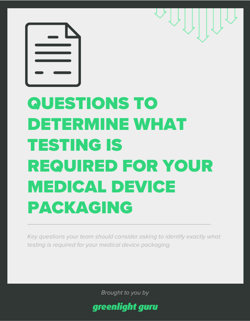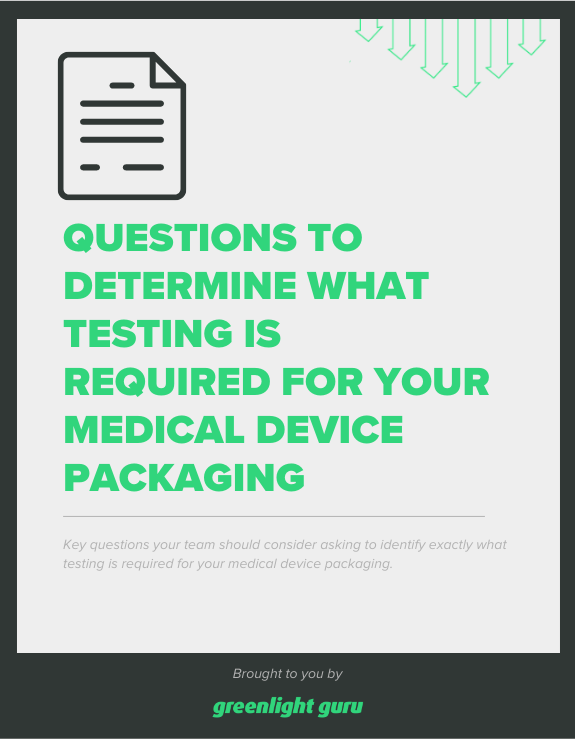
Charles Darwin famously said, “It is not the strongest of the species that survives, nor the most intelligent that survives. It is the one that is most adaptable to change.” And when it comes to managing major changes to medical device packaging, the same is abundantly true.
Packaging and product changes are inevitable, especially in devices with lengthy product lifecycles. With that in mind, your success as a medical device manufacturer is tied directly to your ability to handle those changes effectively and thoroughly.
Let’s take a closer look at how to ensure you’re meeting regulatory requirements, properly planning with project management, mitigating risks, and communicating major changes to your medical device packaging to key stakeholders.
Start with the regulatory requirements for changes to medical device packaging
One of the most critical aspects of managing packaging changes for medical devices is ensuring compliance with regulatory requirements. These are in place to ensure that medical devices are safe, effective, and properly labeled, and that packaging changes do not compromise these objectives.
While these regulations may differ by region or market, one similarity found across the board is that failure to comply will result in regulatory rejections or delays, product recalls, and even legal liabilities.
In the US, medical devices are regulated by the Food and Drug Administration (FDA) under the Quality System Regulation (QSR), which requires that changes to a medical device be documented and reviewed by the manufacturer's quality control unit to ensure that they do not affect the safety or efficacy of the device.
Additionally, manufacturers are required to report any changes to their medical devices that could result in a serious injury or death to the FDA within 30 days of becoming aware of the change—including changes to packaging.
In the EU, changes to medical device packaging are regulated under the Medical Device Regulation (MDR) and the In-Vitro Diagnostic Regulation (IVDR). The MDR and IVDR specify the requirements for the design, manufacture, and distribution of medical devices in the EU.
Changes to medical device packaging in the EU must comply with the MDR or IVDR requirements for design changes. Specifically, manufacturers must document any changes to the device and assess their impact on the safety and performance of the device. If the changes have a significant impact, the manufacturer must submit a new application for the device to be certified.
Project planning is crucial for medical device packaging changes
Effective project planning and execution are essential for managing medical device packaging changes for medical devices. These changes typically involve multiple departments and stakeholders, such as research and development, engineering, quality assurance, manufacturing, and marketing, each with different roles, responsibilities, and timelines.
With that in mind, a project management approach that promotes cross-functional collaboration, communication, and accountability is crucial.
The project planning process for medical device packaging changes may involve several key steps, such as,
-
Feasibility assessments, which aims to determine whether the desired packaging changes are technically and financially viable and align with regulatory and marketing requirements.
-
A gap analysis, which identifies any gaps between current and desired packaging compliance and outlines the actions required to close them.
-
Validation testing, which involves validating the packaging's performance, safety, and labeling according to regulatory and quality standards.
-
Implementation planning, which is the process of developing a detailed project plan, including timelines, resource allocation, and risk management strategies.
When these activities are not in place or ill-defined, it can lead to some common challenges and constraints, like misjudging your budget, manufacturing and shipping delays, issues with resource constraints, and unanticipated technical issues.
That’s why it’s also a great idea to rely on project management tools and techniques, such as project tracking software, stakeholder analysis, and having the proper SOPs in place for your change management processes.
Risk management is essential for managing changes to medical device packaging
Risk management is a critical aspect of managing packaging changes for medical devices. These changes may introduce new or amplified risks that could affect product quality, safety, and regulatory compliance. Having a systematic and proactive game plan will help you thoroughly identify, assess, and mitigate these concerns.
The risk management process for medical device packaging changes may involve several steps, such as risk identification, risk assessment, risk control, and risk monitoring.
-
Risk identification means identifying potential risks that could arise from changes to the medical device packaging. In many cases, this looks like a change in the packaging material or design that could lead to increased risk of contamination or compromise the sterility of the device.
-
Risk assessment takes the risks identified in the previous step, and determines their likelihood and impact. For example, a risk assessment might determine that a change in packaging material could increase the likelihood of contamination by 10%, with a corresponding impact on patient safety.
-
Risk control takes the risk assessment a step further, and ensures appropriate controls are implemented to mitigate the identified risks. For example, if a change in packaging material is identified as a potential risk, additional testing or packaging validation may be required to ensure the new material is compatible with the device and does not compromise its safety or efficacy.
-
Risk monitoring only occurs once controls have been implemented, as they must be monitored to ensure their effectiveness and to identify any new or emerging risks that may arise. This includes any ongoing testing or surveillance required to ensure that the new packaging material continues to meet the required standards and does not compromise the safety or efficacy of the device.
Even with these processes in place, managing risk during packaging changes can be challenging for many MedTech companies. Often, these companies are using limiting tools, like spreadsheets, to create and manage all the required documentation. This creates a lot of inefficiencies, delays projects, and potentially creates even more risk for the company. But that doesn’t mean succumbing to risk is simply inevitable.
With Greenlight Guru’s Risk Management Software, MedTech companies can seamlessly manage risk throughout the entire product lifecycle. Achieving compliance and following regulatory best practices is made easy with the only QMS solution purpose-built for medical devices that aligns with ISO 14971:2019 and risk-based requirements of ISO 13485:2016.
How you communicate medical device packaging changes with your stakeholders matters
Managing changes to medical device packaging is virtually impossible without effective communication with your stakeholders. The individuals included in your communication are often a varied bunch, and may include internal teams, such as product development engineering, quality engineering, manufacturing engineering, related contract manufacturers, as well as external parties, such as regulatory agencies, suppliers, customers, and patients.
Remember that each stakeholder group may have different interests, expectations, and concerns regarding your medical device packaging changes, and may require different communication methods and frequency.
Though every business’ cadence is their own, there are a few reliable steps you can follow for effective stakeholder communication of medical device packaging changes.
-
Stakeholder analysis aims to identify and prioritize the stakeholder groups and their communication needs, such as their level of involvement, knowledge, and influence.
-
Message development involves crafting clear, concise, and consistent messages that address the stakeholder needs and objectives.
-
Communication planning involves selecting the appropriate communication channels, timing, and frequency for each stakeholder group and developing a communication schedule.
-
Feedback gathering involves soliciting feedback from stakeholders on the packaging changes and addressing any concerns or issues that arise.
Be sure to look out for some of the more common issues with stakeholder communication, such as lack of engagement, resistance to change, and even outright noncompliance. However, these kinds of negative outcomes can typically be avoided with a spirit of transparent communication.
Greenlight Guru makes managing changes to medical device packaging easier than ever
When major changes to medical device packaging occur, it requires careful planning, thoughtful execution, diligent risk management, and a transparent approach to stakeholder communication.
However, successful packaging changes also require a culture of continuous improvement, collaboration, and innovation that fosters the development of safe, effective, and user-friendly medical devices. And that’s where Greenlight Guru comes in.
Greenlight Guru provides the leading cloud-based solution for MedTech companies to bring safe, high quality medical devices to patients, with less risk. Greenlight Guru provides purpose-built quality management, product development, and clinical data management solutions that together help teams accelerate timelines, streamline compliance, and achieve MedTech excellence.
Ready to learn more? Contact us today for your free personalized demo of Greenlight Guru ➔
Looking for an all-in-one QMS solution to advance the success of your in-market devices and integrates your quality processes with product development efforts? Click here to take a quick tour of Greenlight Guru's Medical Device QMS software →
Etienne Nichols is the Head of Industry Insights & Education at Greenlight Guru. As a Mechanical Engineer and Medical Device Guru, he specializes in simplifying complex ideas, teaching system integration, and connecting industry leaders. While hosting the Global Medical Device Podcast, Etienne has led over 200...
Related Posts
Understanding FDA’s Special 510(k) Program
ISO 20417:2021 Replaces EN 1041: What You Need To Know
How to Manage Complex Downstream Design Changes to Your Medical Device
Get your free resource
Questions to Determine What Testing is Required for Your Medical Device Packaging










